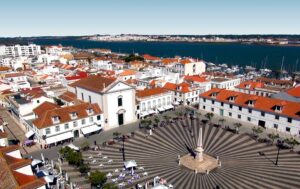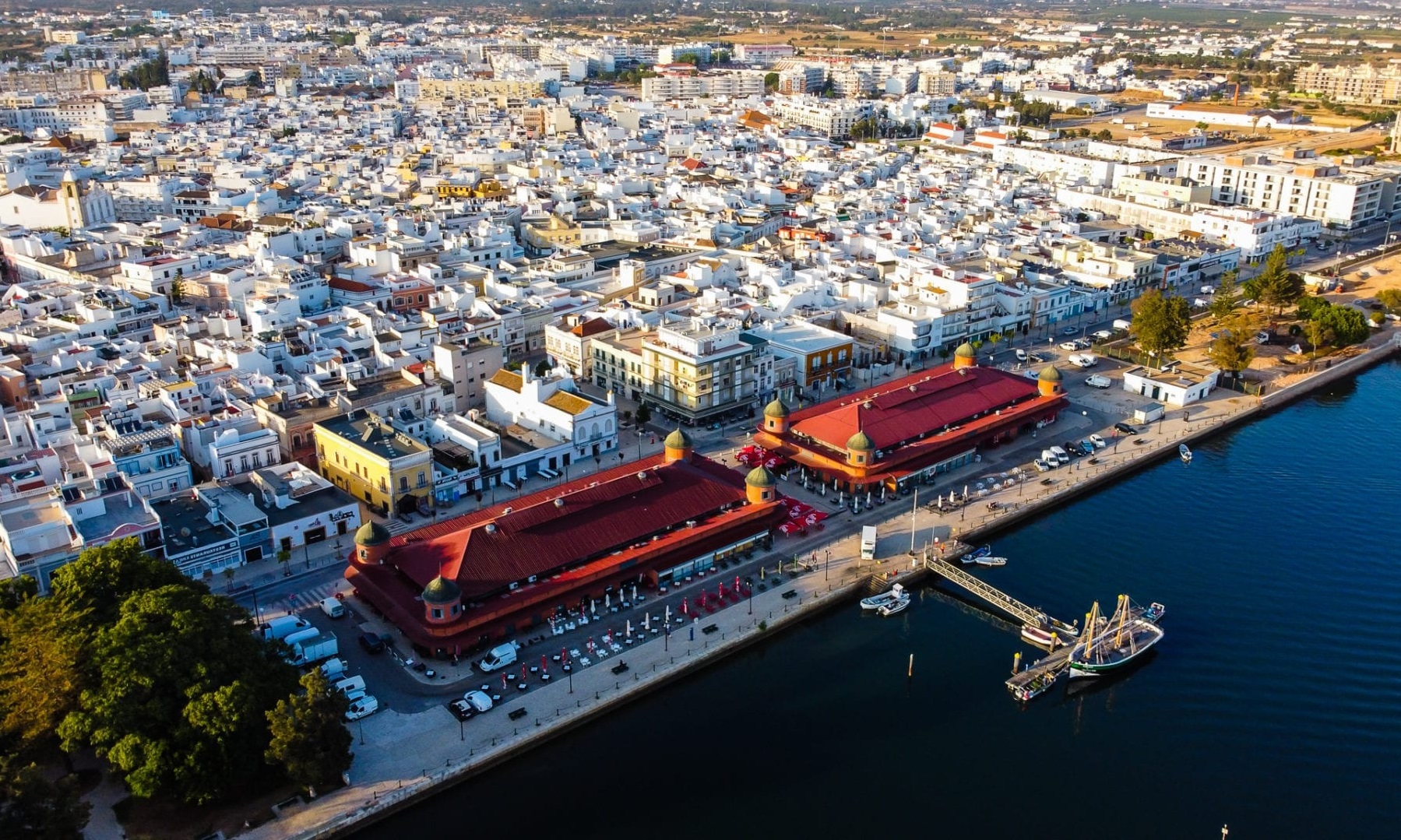
Today, Olhão is famous for having the Algarve’s largest fish market, and, unlike many former fishing towns in the region, a significant percentage of its residents still work in the fishing industry. The tourism industry is also flourishing, as the city is the gateway to the islands of the Ria Formosa Natural Park. The popularity of the beaches on these islands grows every year, and there are regular ferries from the port.
On the waterfront are a number of seafood restaurants with outdoor seating, attracting tourists throughout the year.
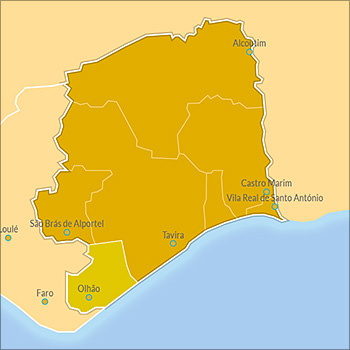
The narrow streets of the largely pedestrianized center lead to a couple of whitewashed churches topped by stork nests and are lined with cube-shaped houses with rooftop terraces, said to have been inspired by North African architecture.
Each August (usually in the second week), Olhão hosts the lively “Festival do Marisco” (Seafood Festival) offering fresh seafood and live entertainment for several days.

Attractions in Olhão
- Olhão market
Besides the beaches, the large market is Olhão’s main attraction that was built in 1916. This is the place where locals go each morning for fresh produce and the catch of the day, and where tourists go to experience a typical Portuguese fish market and see all kinds of fish. It’s made up of two identical red brick buildings (one for the fruit and vegetables and the other for the fish), surrounded by outdoor cafés. The best day for a visit is Saturday when there are extra stalls selling traditional products from the region.
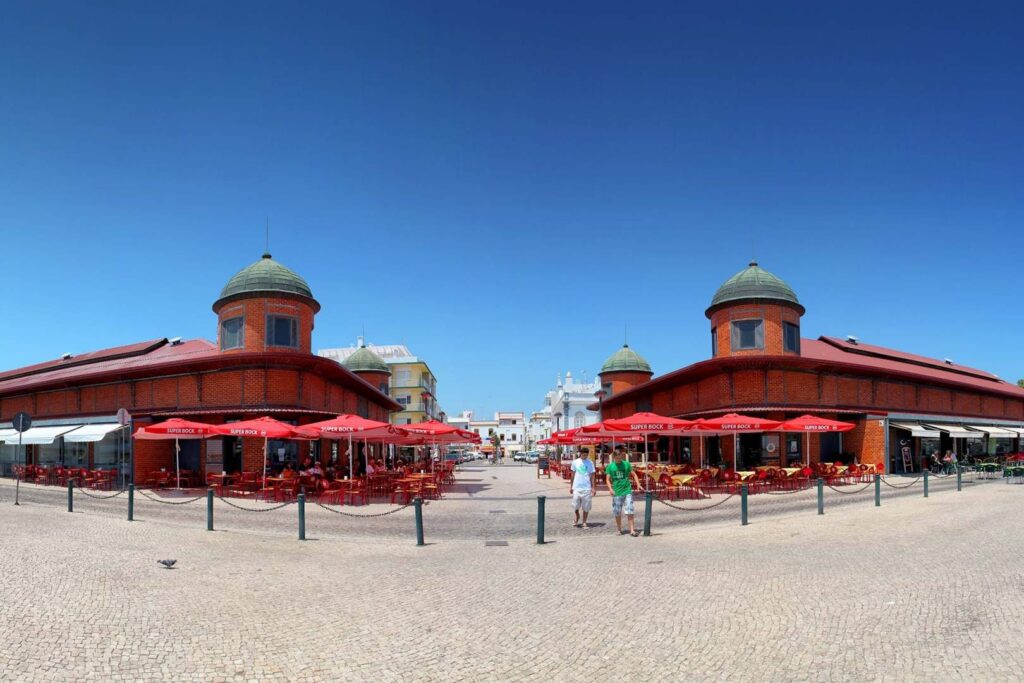
- Municipal Museum
Built in 1771, this building originally housed services for the local fishermen (such as a pharmacy and a butcher shop), and is now a small museum explaining the history of Olhão. There are permanent displays of archaeological finds, as well as temporary exhibitions related to local culture.
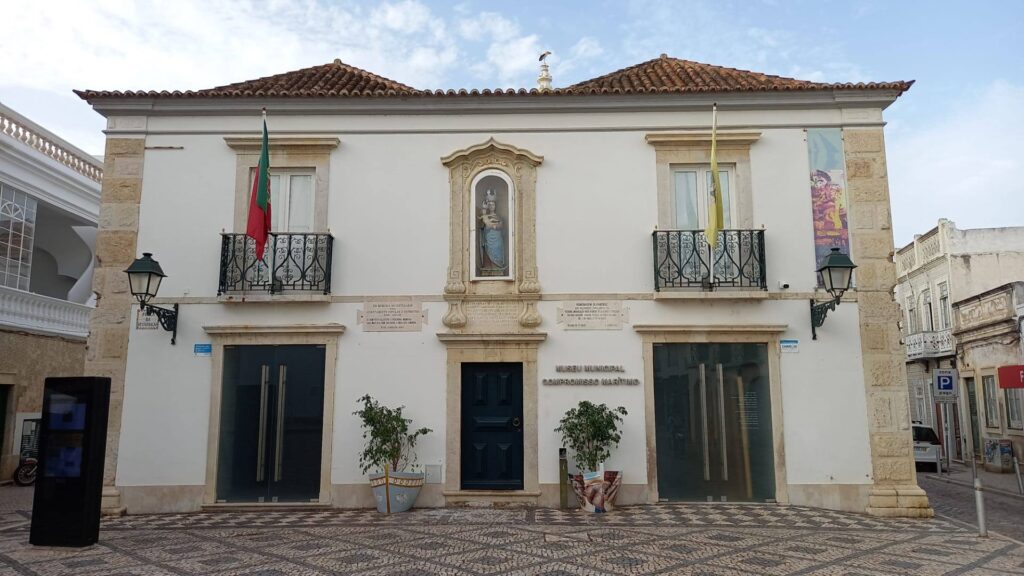
Outside is a monument inaugurated in 1931, to celebrate the men who led the revolt against Napoleon’s troops in Olhão, in 1808.
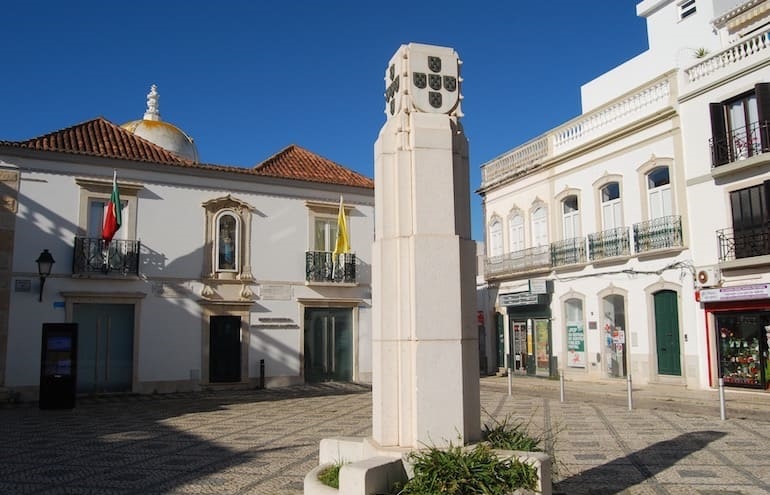
- Igreja Matriz de Olhão
Facing the Municipal Museum, in the same square, is Olhão’s main church and most significant monument. It opened for services in 1715 but was only completed in 1722, thanks to donations from the local fishermen. The interior is surprisingly rich, with three gilded altars reflecting the baroque style of the early 18th century. And the ceiling is decorated with a fresco.
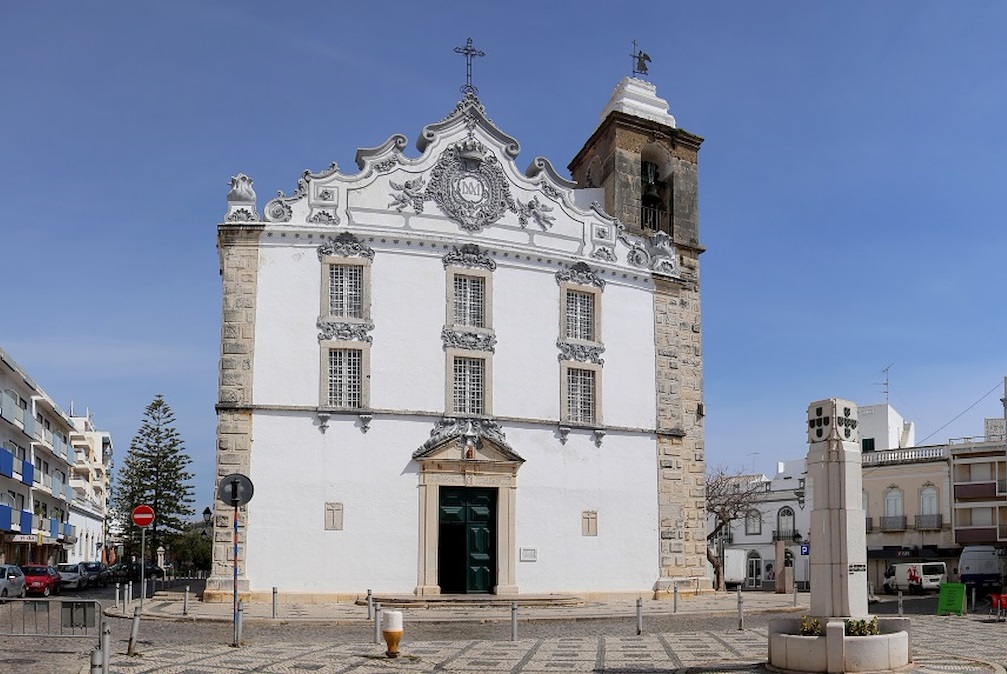
- Capela do Nosso Senhor dos Aflitos
Right behind the Igreja Matriz is this little chapel with an azulejo-tiled panel on the façade depicting Christ on the Cross. It’s where many locals go light a candle and say their daily prayers — a tradition that started with fishermen’s wives on stormy days, hoping for their husband’s safe return from the sea.
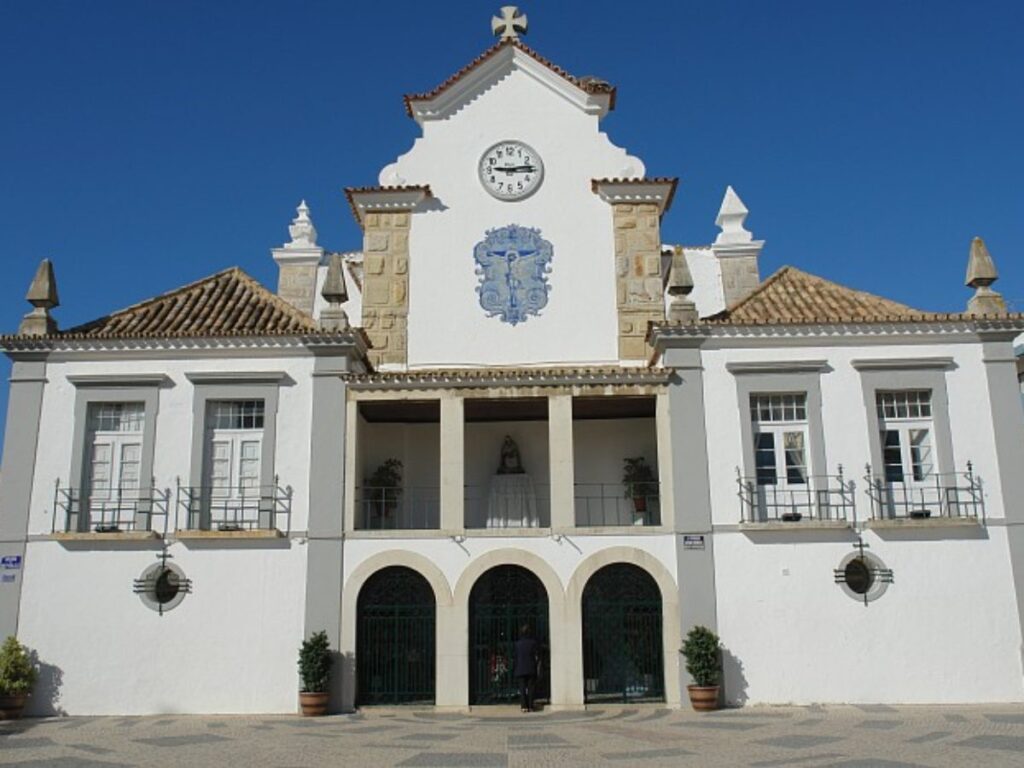
- Igreja de Nossa Senhora da Soledade
As the first stone building in Olhão, it was built in the early 1600s. At that time, the city was a tiny community with nothing but fisherman huts. It’s a modest church, featuring a small dome and an altarpiece with an image of St. Lucy. Its rooftop is a favorite spot for storks to build their nests.
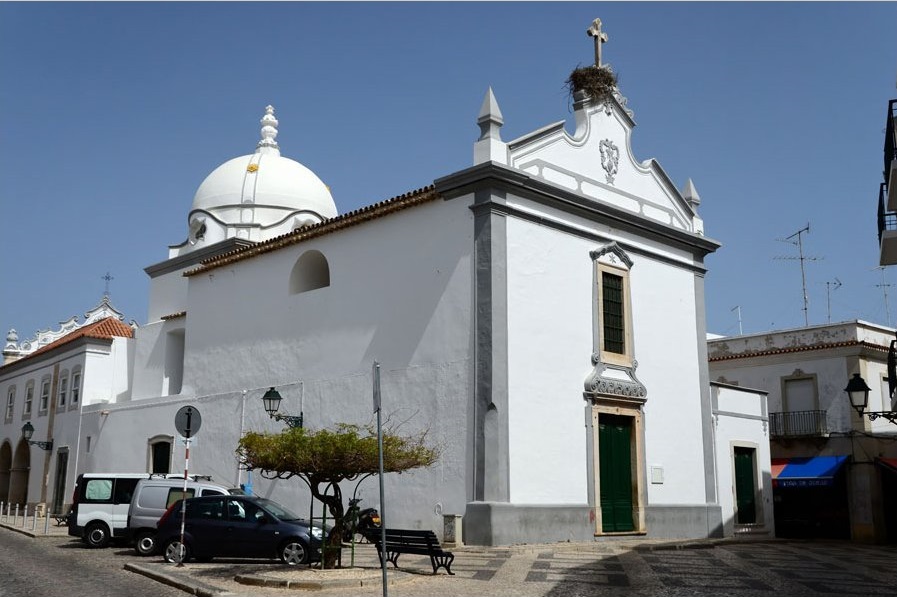
- Caíque Bom Sucesso
At the marina, by the market, a replica of a boat is anchored which took a group of 17 local fishermen to Brazil in 1808. These men crossed the Atlantic to inform King João VI (who had escaped to Rio de Janeiro when Napoleon invaded Portugal) that the people of Olhão had managed to kick out the French. Measuring 20 meters in length and 5 meters in width, it’s hard to imagine how such a small boat made such a voyage. It took three months, but it made it to its destination, and the king rewarded the fishermen by making Olhão a town independent from Faro.
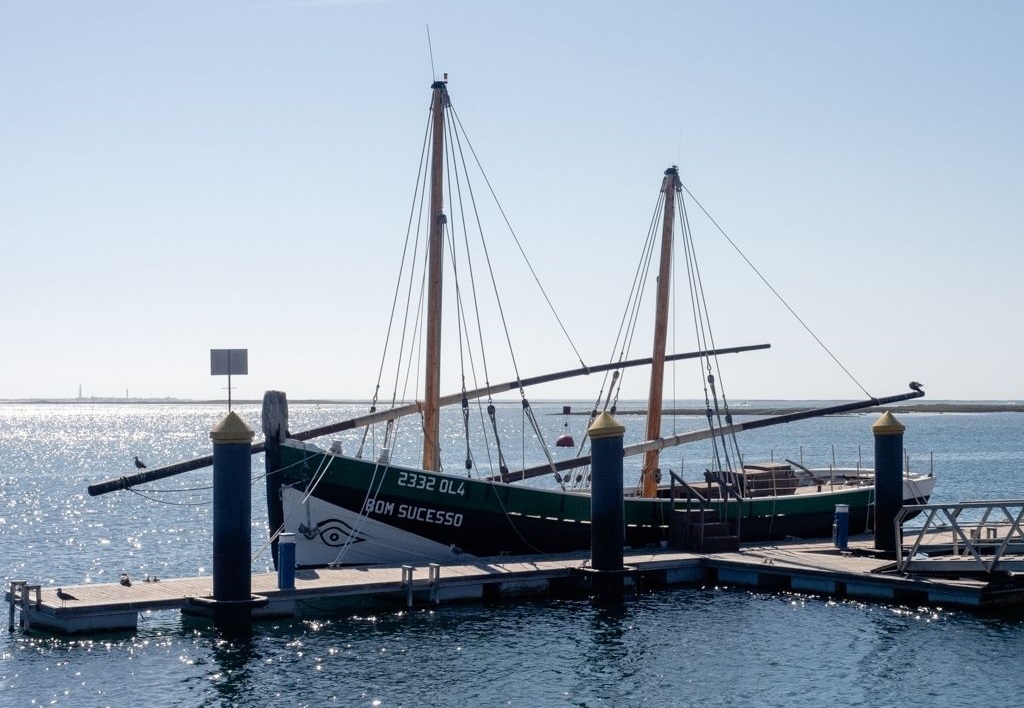
- Jardim Pescador Olhanense
Next to the market, on the waterfront, is this park which serves as a meeting point for locals and as a stage for cultural events. It preserves an old music temple and benches decorated with azulejo-tiled panels illustrating episodes from local history, like the revolt of the people of Olhão against the French, or the arrival of the Bom Sucesso boat in Rio de Janeiro.

- Murals on Rua Manuel Tomé Viegas Vaz
The façades of the former canning factories in the center of Olhão are completely covered with murals. They depict scenes of local life in the heydays of Olhão’s fishing industry, in black and white, giving the impression of old photographs.
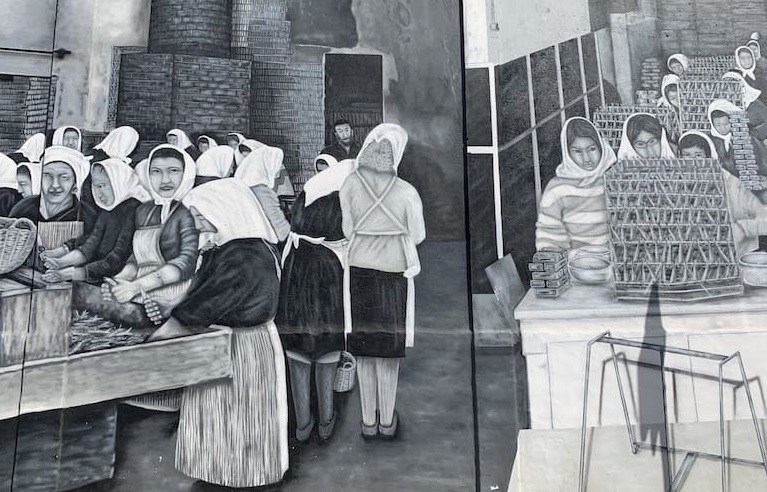
- The Ria Formosa Natural Park Interpretation Center (Quinta de Marim)
Olhão’s beaches are on islands of the Ria Formosa Natural Park. To know more about this protected area, head to Quinta de Marim. The site is a little neglected, but you’ll be able to follow paths and boardwalks through 3 kilometers (almost 2 miles), observe different animal species in their natural habitat, and also get to see an archaeological site with Roman remains from the 4th century. This is also the breeding center of the Portuguese Water Dog, a breed made famous when U.S. President Barack Obama chose it for the White House dog.
In the renovated chalet, that belonged to a former mayor of Olhão, visitors can know more about environmental protection, through exhibitions and events held in an auditorium.
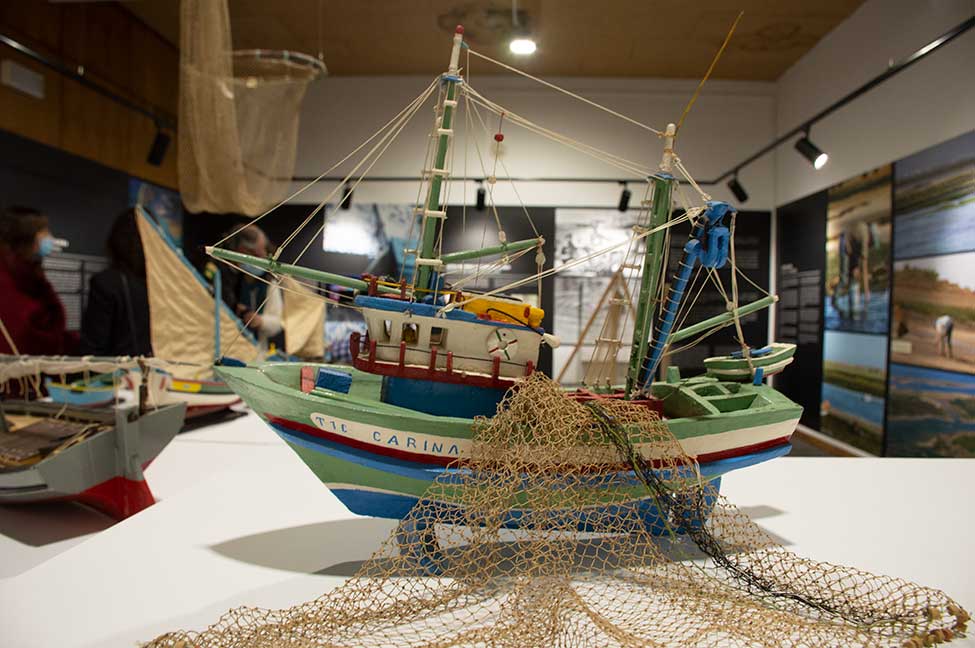
The tranquil waters of the Ria Formosa, a paradise for nature lovers; and in the background, the countryside dotted with white houses: these are the attractions of Olhão and its municipality, a great place for a holiday full of sun, life and a whole host of charms. The islands and the long stretches of beach that are an ideal spot for swimming and sunbathing.
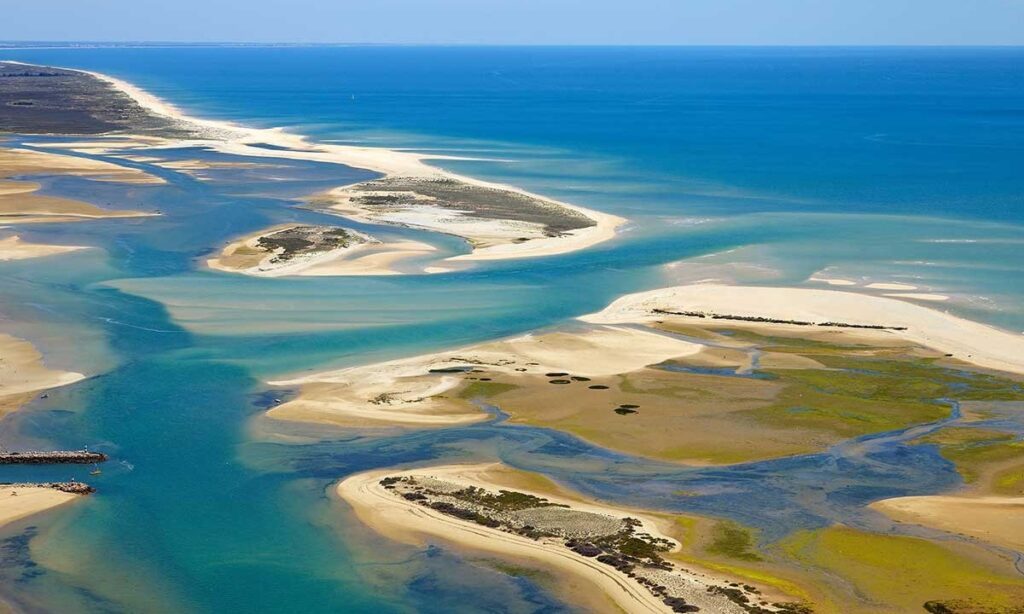
How to get to Olhão
Olhão is 15 minutes from Faro, heading east on road N125. It’s just 10 minutes by train, and there are about a dozen departures per day (check the times at the cp.pt website).
Vamus buses (numbers 63 and 67) also connect the two cities, taking between 20 and 25 minutes. The bus terminal in Olhão is on Rua General Humberto Delgado, in the city center.
If you’re coming from Tavira, the drive takes about 25 minutes, heading west on Highway A22 or road N125. The train from Tavira also takes about 25 minutes, and there are also a dozen departures per day.
It’s also possible to take Vamus bus n°67 from Tavira, but it takes about 40 minutes and there are very few services per day, so the train is the most recommended option.

